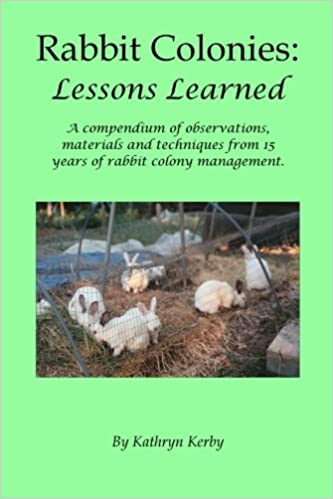|
Search this site for keywords or topics..... | ||

Custom Search
| ||
Complete Feed Rations
When newbie flock owners get started with their birds, the very common advice (which we support) is to have those new owners use a complete ration for those birds. The theory goes that by using a complete ration, new flock owners can eliminate one of the more complex variables in flock management, and get a feel for working with healthy birds. There are so many things to learn when starting with a new flock that having the nutritional aspect taken care of, can be a relief. Again, we generally support that premise. However, at some point most flock owners start to wonder if there's a better way to feed their birds. Some are interested in offering more variety rather than the same kind of pellet or crumble every single day. Sometimes the flock owner is concerned with the amount of wasted or refused feed, and starts to wonder if it's just not very palatable. Many owners have started to experiment with keeping their birds on pasture, and have wondered (correctly) whether their birds' nutritional needs have changed as a result. Some owners already grow, or could grow, a big portion of their feed, or potential alternate feeds, and wish to save money by reducing or eliminating the purchased feed. And some owners simply enjoy giving their birds a variety of “treats” to their birds. So. What's an owner to do?
We continue to recommend that new owners stick with a complete ration for at least the first two years of flock ownership. Generally speaking, any given individual bird is going to be the most productive during her first 18 months, and then go through a molt between the ages of 18-24 months. After that time, even with top-notch feed and other perfect conditions, a typical hen will resume laying but not at her previous production level. Carrying a first flock through their first 18-24 months is therefore something of a milestone for any new owner. Once that milestone is passed, flock owners often have sufficient experience to know what production levels should be, what feed rates should be, and what the first signs of illness or deficiency look like. Armed with that experience, an owner is much better equipped to start to experiment with the feed program.
Poultry Books
Sponsored Links
Our Successful Farming and Ranching Books

We released our very first self-published book. The Chicken Coop Manual in 2014. It is a full color guide to conventional and alternative poultry housing options, including 8 conventional stud construction plans, 12 alternative housing methods, and almost 20 different design features. This book is available on Amazon.com and as a PDF download. Please visit The Chicken Coop Manual page for more information.

Rabbit Colonies: Lessons Learned
We started with rabbits in 2002, and we've been experimenting with colony management ever since. Fast forward to 2017, when I decided to write another book, this time about colony management. The book is chock-full of practical information, and is available from both Amazon and as a PDF download. Please visit the Rabbit Colonies page for more information.
The Pastured Pig Handbook
We are currently working on our next self-published book: The Pastured Pig Handbook. This particular book addresses a profitable, popular and successful hog management approach which sadly is not yet well documented. Our handbook, will cover all the various issues involved with pastured hog management, including case studies of numerous current pastured pig operations. If you have any questions about this book, please Contact Us.